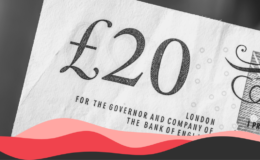- This claim partially miscommunicates spending analysis by the NI Fiscal Council, and confusingly asserts that local spending is both going up and going down.
- The Fiscal Council’s analysis says spending here is set to rise, but by a proportionately smaller amount than elsewhere in the UK.
- According to Treasury figures, NI’s departmental spending will go up by 3.6% per year to 2025, compared with 6% per year in the UK as a whole.
DUP MPs Sir Jeffrey Donaldson and Gavin Robinson both recently claimed in press releases issued at the end of April that:
“The Treasury contribution to fund public services in Northern Ireland is going down rather than rising. As an example, in England up to 2025, spending will increase by 6% but only 3.6% in Northern Ireland.”
This claim appeared in a 25 April press release from Gavin Robinson MP and was repeated in a 27 April statement from Sir Jeffrey Donaldson MP.
These identical claims across two media releases feature confused explanations of an analysis by the Northern Ireland Fiscal Council (NIFC).
The claim contains an apparent contradiction that local spending is both rising and falling at the same time. It’s a confused explanation of points made by the Fiscal Council about the so-called “Barnett Squeeze”. However, changes in public spending can be measured both in absolute terms (ignoring inflation) and real terms (taking inflation into account), and it is entirely possible for one measure to rise while the other falls.
A report published by NIFC last September outlines how, according to indicative Treasury figures (measured in absolute terms), spending in NI is set to rise between now and 2025.
However, the Fiscal Council goes on to say that spending in the UK as a whole will rise by 6% per year (rather than in total – the DUP MPs’ claims don’t specify this) but in NI the increase will only be 3.6% (again, per year rather than in total).
- Source
We asked the DUP where they got the evidence for this claim. They pointed us to a September 2022 paper from the Northern Ireland Fiscal Council (NIFC), adding that “Specifically it’s Page 9 which refers to the block grant increasing in NI by 3.6% and plots it against spending in England.”
What does the report say?
In a section titled Is the Block Grant being squeezed? (page 8) the paper lays out how spending per capita in Northern Ireland will grow more slowly on a percentage basis than in other parts of the UK, as a result of the Barnett formula.
“When the UK Government increases spending in the rest of the UK on services for which the Executive is responsible in NI, the Block Grant rises by the same amount in pounds per head.
“Because spending per head starts higher in NI than in England, increasing spending per head by the same cash amount means a smaller percentage increase in NI and gradual convergence over time in NI relative to UK Government spending in the rest of the UK.”
This so-called “Barnett Squeeze” has overseen “a trend decline in spending per head in NI relative to UK Government spending in the rest of the UK over most of the last four decades” and, according to the Fiscal Council paper, this is set to continue.

Figure 1 – source: NI Fiscal Council Sept 2022 paper Sustainability Report 2022
According to the Fiscal Council:
“Chart 1.3 [Figure 1, above] shows that the NI spending premium is expected to be significantly lower over the three years of the current UK Spending Review to 2024-25 than in previous years. Treasury figures show that the NI Block Grant is set to rise by 3.6 per cent a year between 2019-20 and 2024-25, compared to a 6.0 per cent annual increase in the DEL [Departmental Expenditure Limits] for the UK as a whole, 5.1 per cent for Wales for 4.9 per cent for Scotland.
“As well as the impact of the Barnett formula, the slower growth in the NI Block Grant is in part due to the withdrawal of previous time limited allocations, including from political agreements. This slower growth would see the Block Grant fall from 38 per cent above UK equivalent spending per head of population in 2017-18 to 25 per cent above in 2024-25.”
The percentages quoted by both DUP MPs appear here, although the original text does not say quite the same thing as the claims set out by the two MPs.
The “Barnett Squeeze” is not about Northern Irish spending reducing while it goes up in England (or the UK, as a whole), it refers to how the local spending premium decreases over time due to the nature of the Barnett formula.
The 6% rise in spending indicated by Treasury figures relates to the UK as a whole, rather than just England (although bear in mind England has no devolved parliament and its central government is effectively Westminster).
Nonetheless, the Treasury contributions to public spending here are not set to go down, according to the Fiscal Council analysis.
A quick note on public spending
In the quotes above, the Fiscal Council mentions Departmental Expenditure Limits (DEL). Broadly speaking, public spending is comprised of DEL plus Annually Managed Expenditure (AME, which is spent on demand-led programmes like social security, tax credits or public pensions).
All of the discussions above relate to DEL rather than AME – therefore, this does not represent all the public finance which lands in NI but does cover the spending by Stormont departments.
Departmental spending is mainly funded from money sent to Northern Ireland from the UK Treasury. The only major additional source of public spending in NI is rates, which raises around £700m (compared to £15bn of “regionally identifiable expenditure” alone). “Treasury contributions” therefore equate more or less directly with public spending, when comparing trends.
Rising and falling at the same time
The DUP’s claim does contain an apparent contradiction: the “Treasury contribution” to public spending is going down, while local spending is going up.
The section above outlines how the “Treasury contribution” to public spending accounts for almost all public spending.
The only way the assertion made by the MPs is not entirely contradictory relates to inflation. It is entirely possible that spending might rise in cash terms (i.e. not accounting for inflation) but fall in real terms (i.e. when inflation is taken into account). This can happen if percentage increases in spending are lower than the percentage increases in inflation over the same period of time.
However, if this is what the MPs meant, they communicated it poorly. Their claim runs across two consecutive sentences and it would be confusing for the first to refer to real-terms spending while the second refers to cash terms spending, without any indication that this was the intended meaning.
While Sir Jeffrey’s media release does mention inflation in a previous paragraph, the issues described in the paragraph above still apply. Mr Robinson’s release, which was published first, does not mention inflation at all.
The Fiscal Council report says:
“Because of the way in which the formula operates, the faster spending across the UK rises, the faster the NI-to-England (or UK) premium declines. In principle the premium would rise if spending across the UK fell, although this rarely happens, particularly as the Barnett formula is applied to nominal changes in spending rather than real (inflation-adjusted) ones.”
It is impossible to fact check inflation figures for the next couple of years. Claims (even educated ones) would just be speculation about the future, without any data that could validate or refute those claims.
On the same basis, it is impossible to fact check precisely what public spending will be over the next few years – however, it is possible to check what current Treasury indications are about spending projections. That is the basis for the figures in the Fiscal Council’s report.




